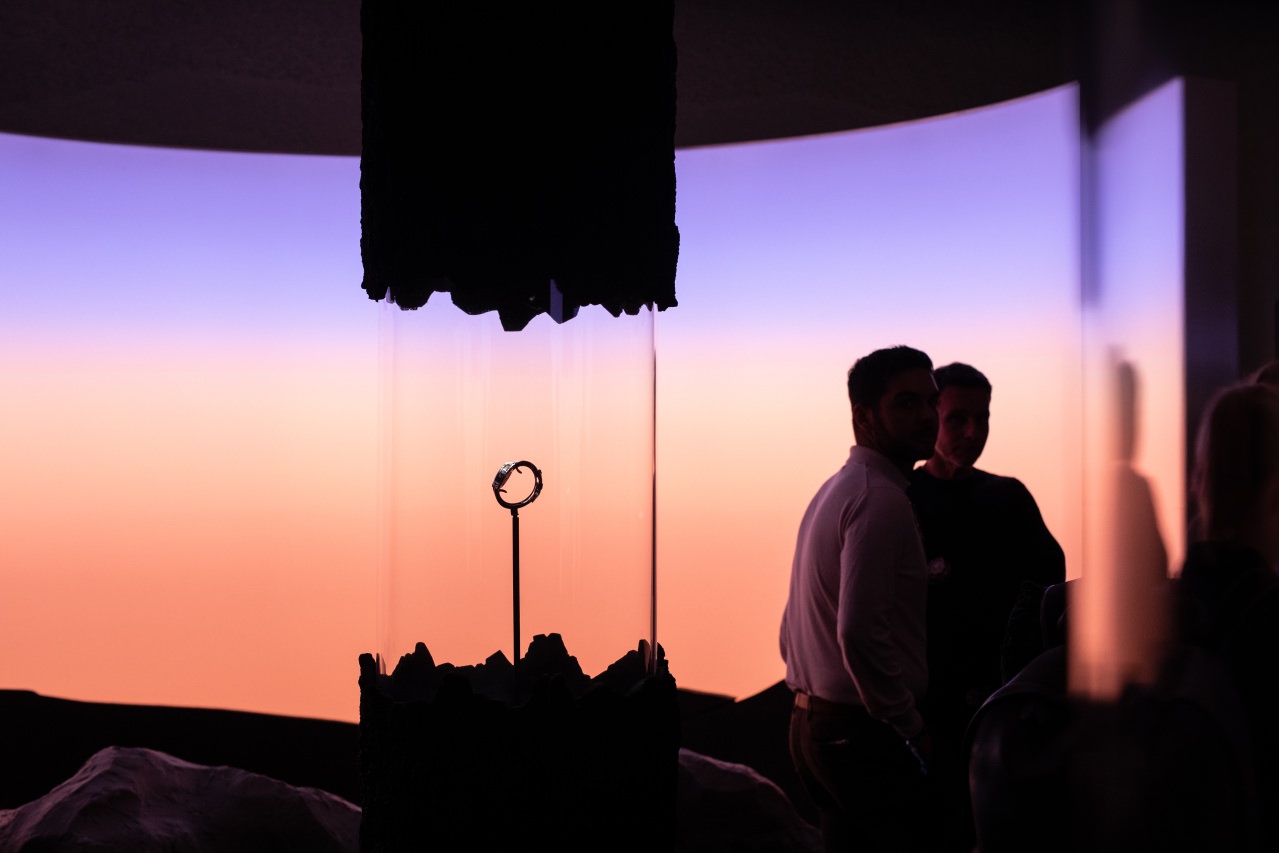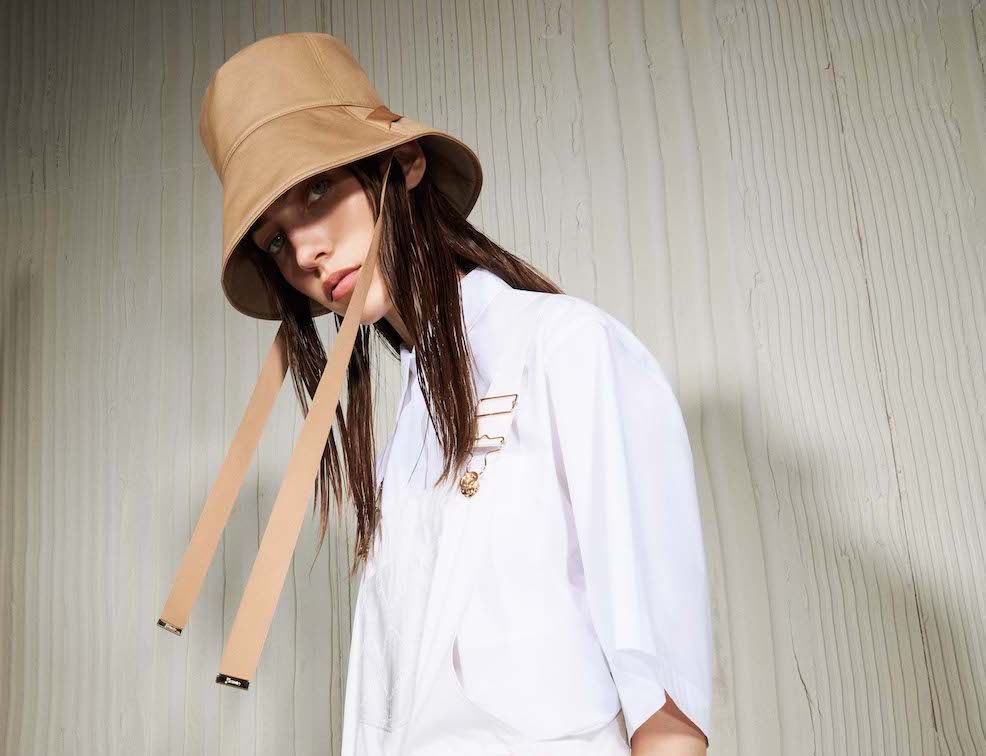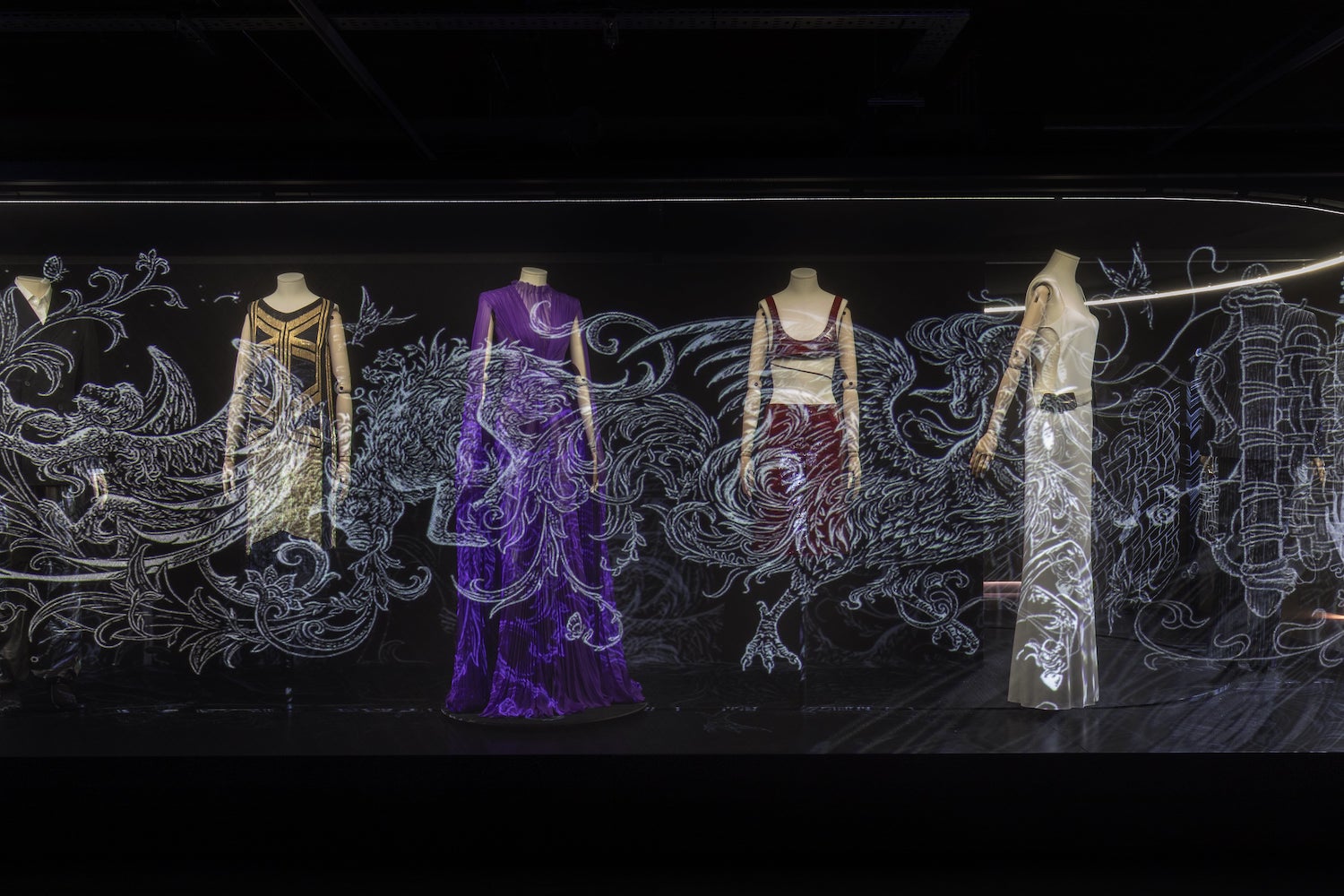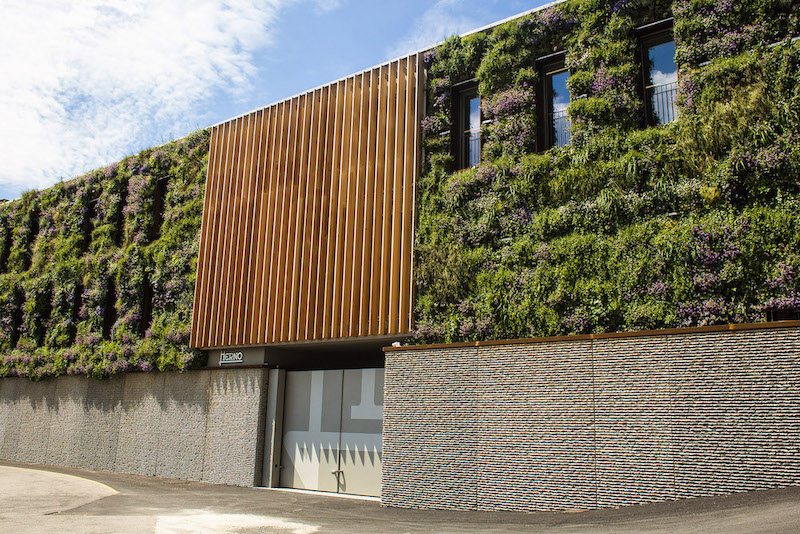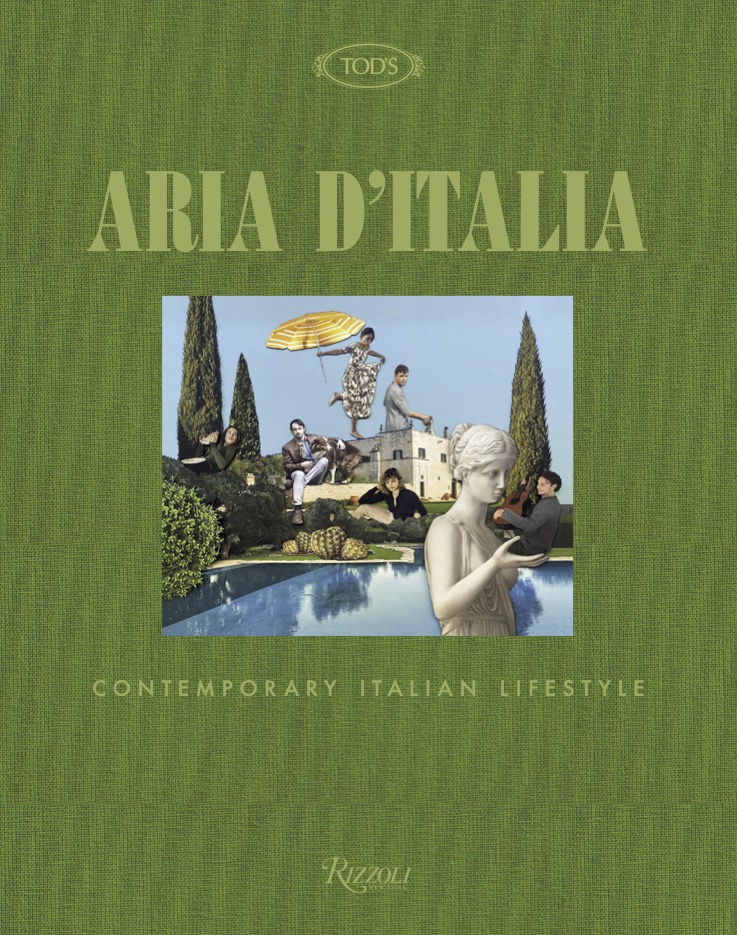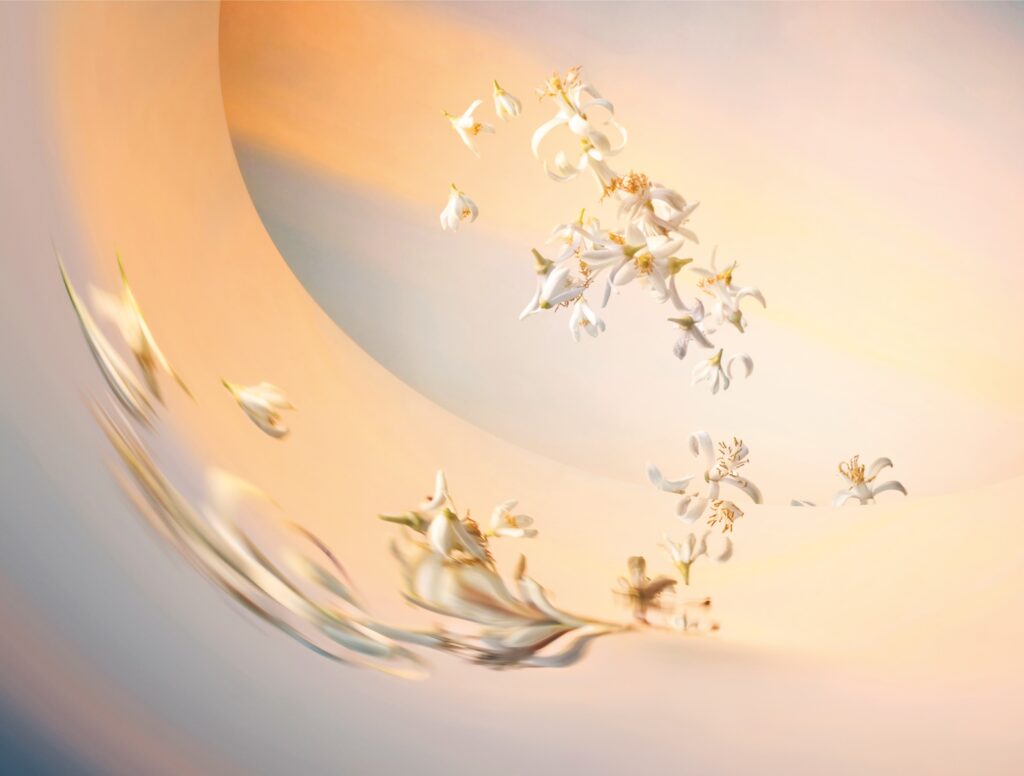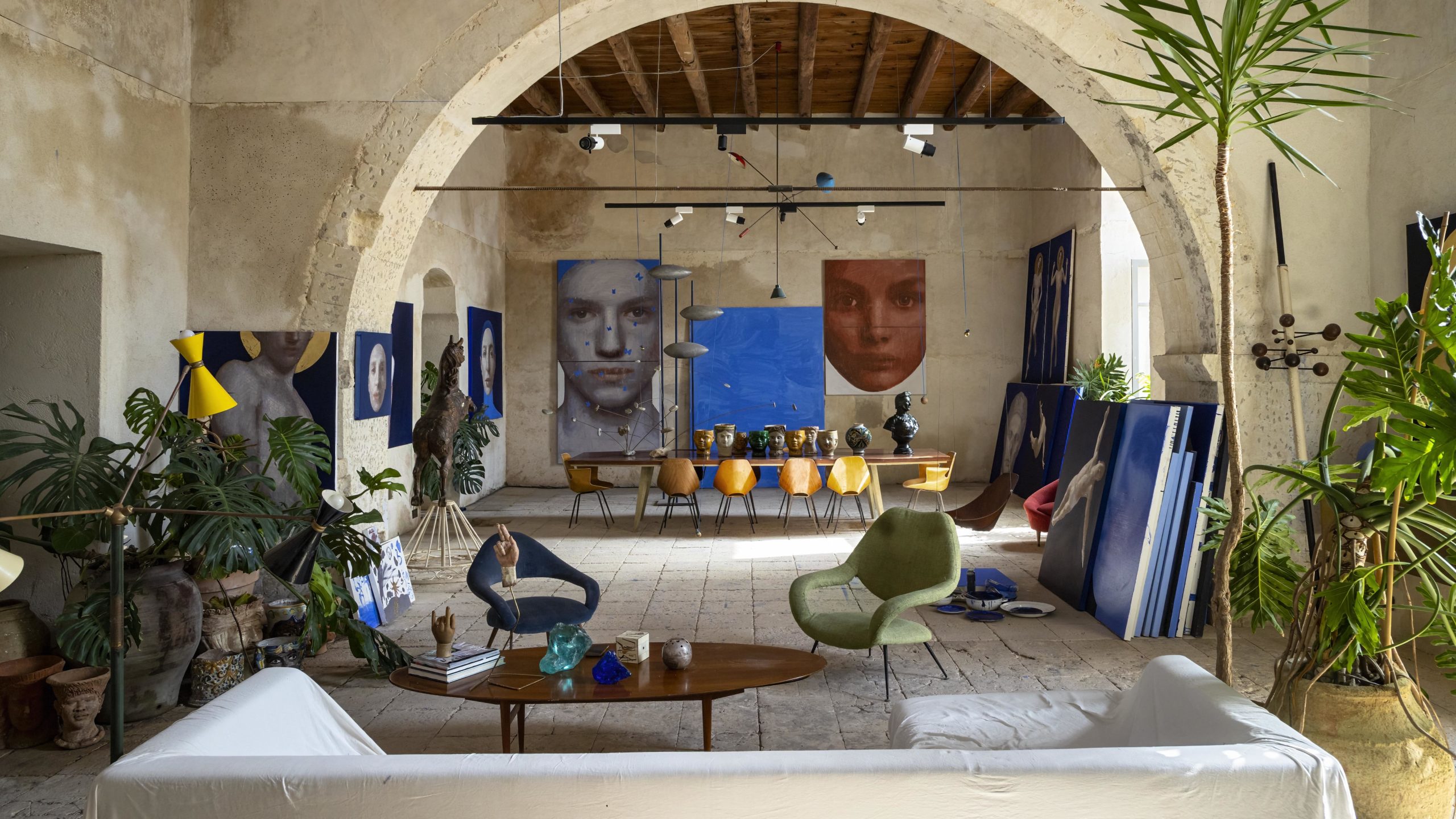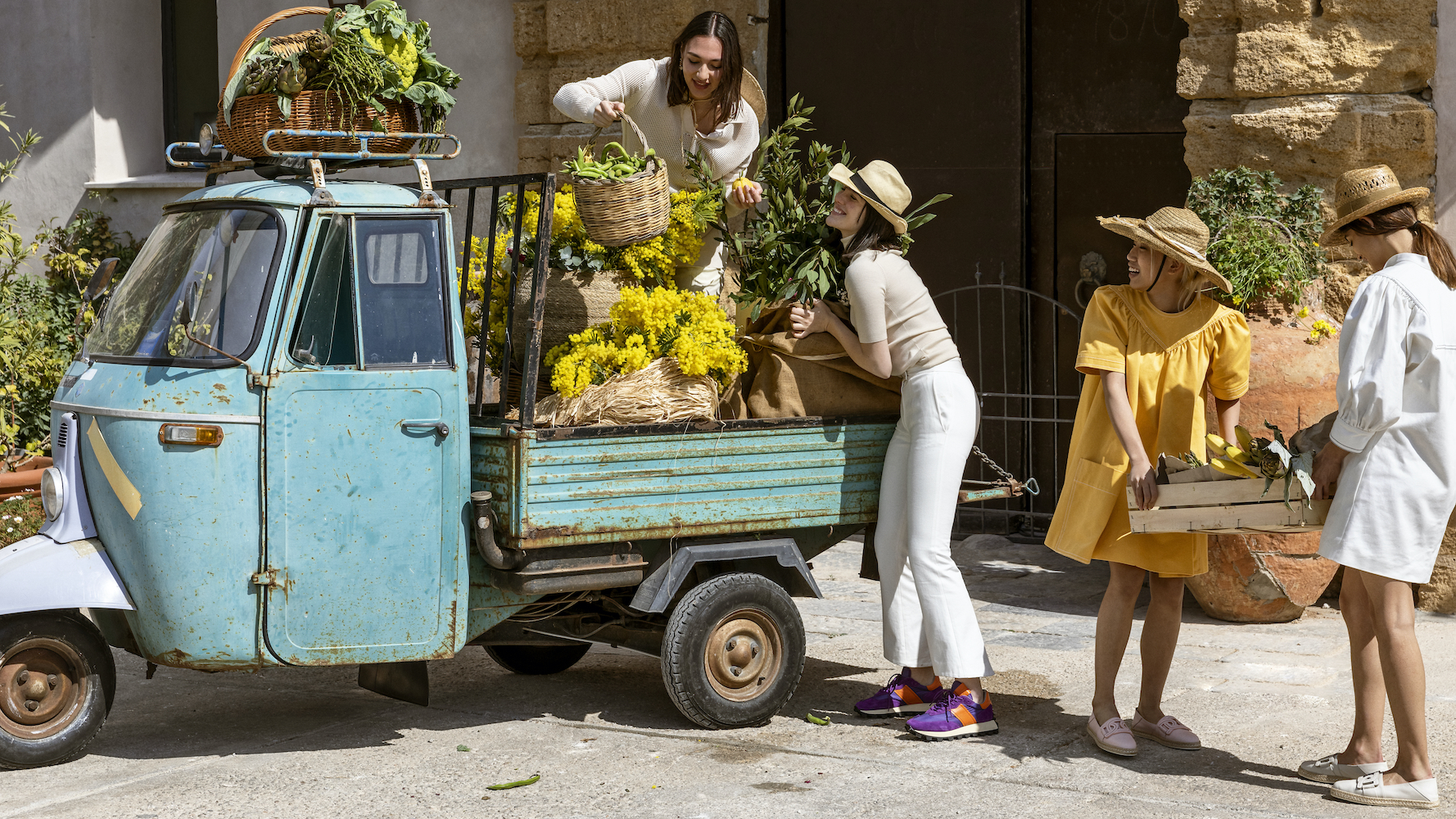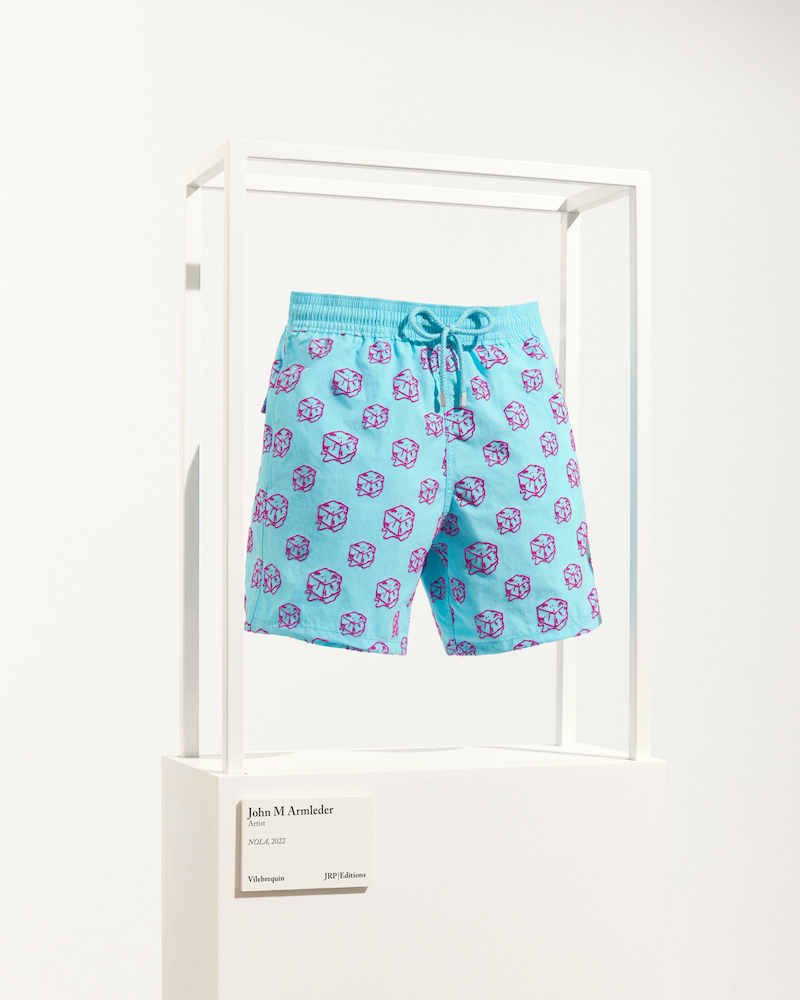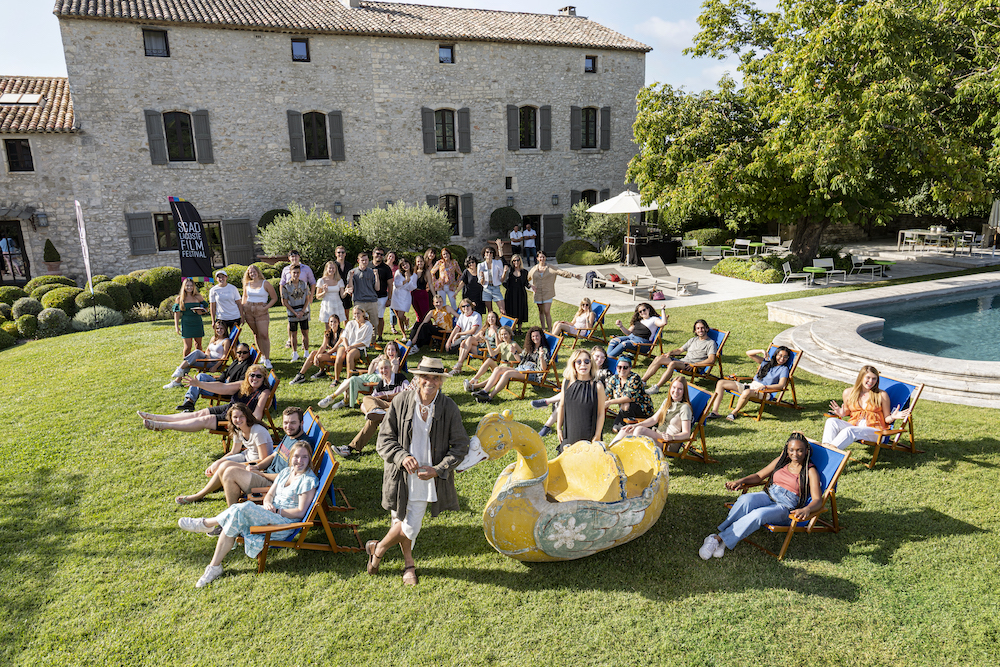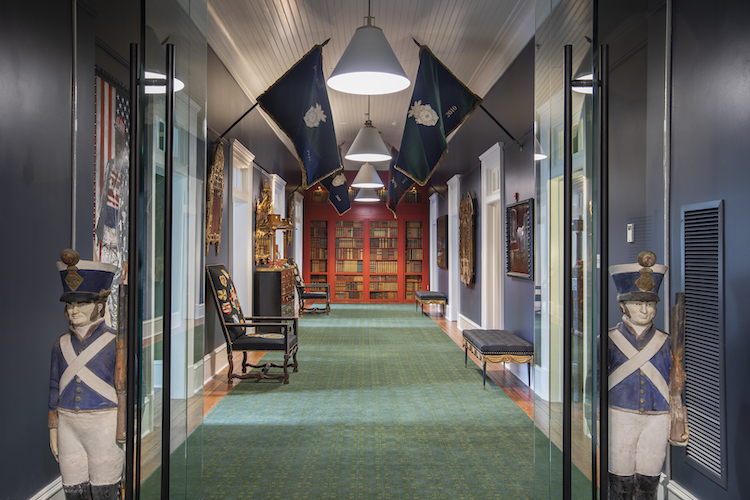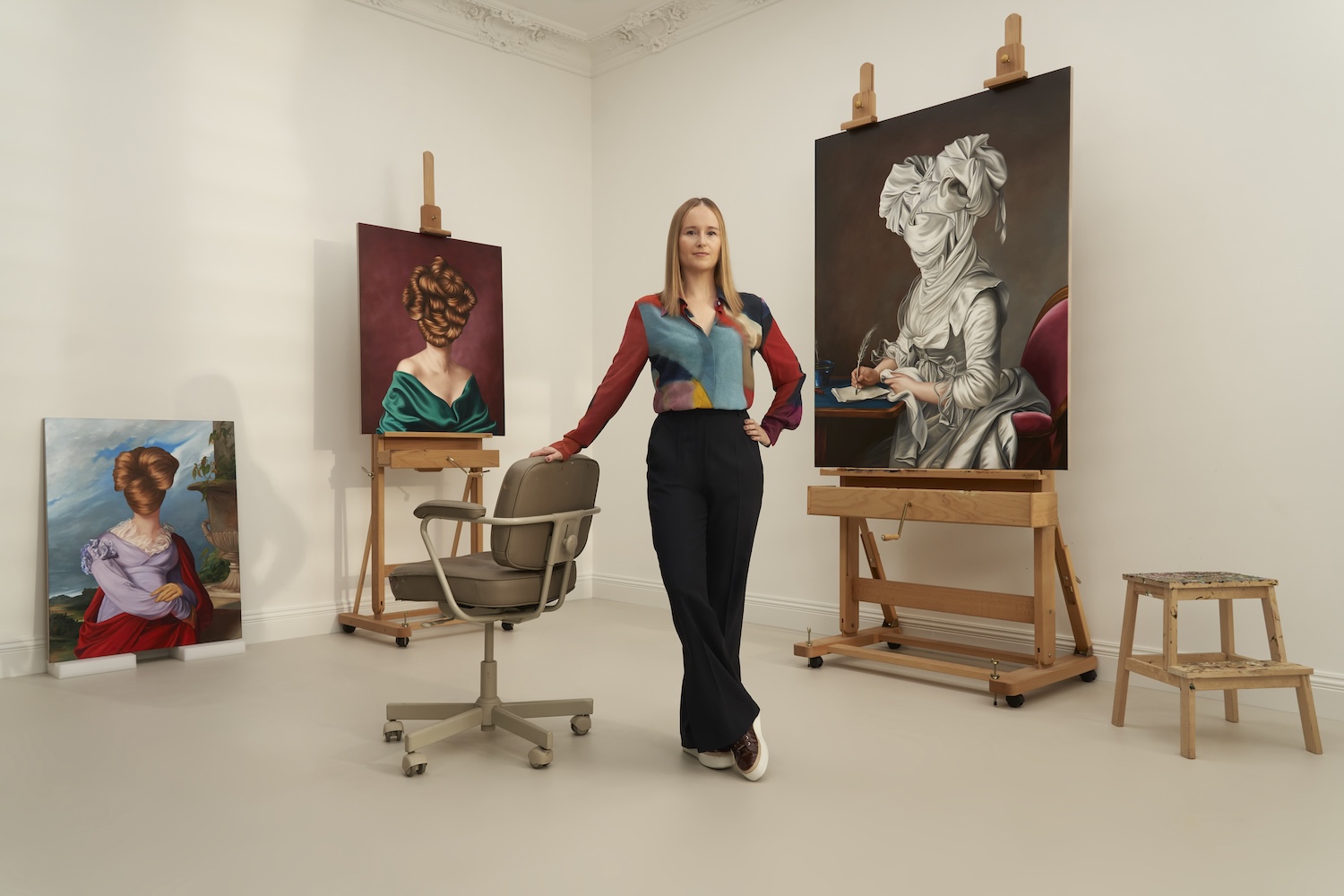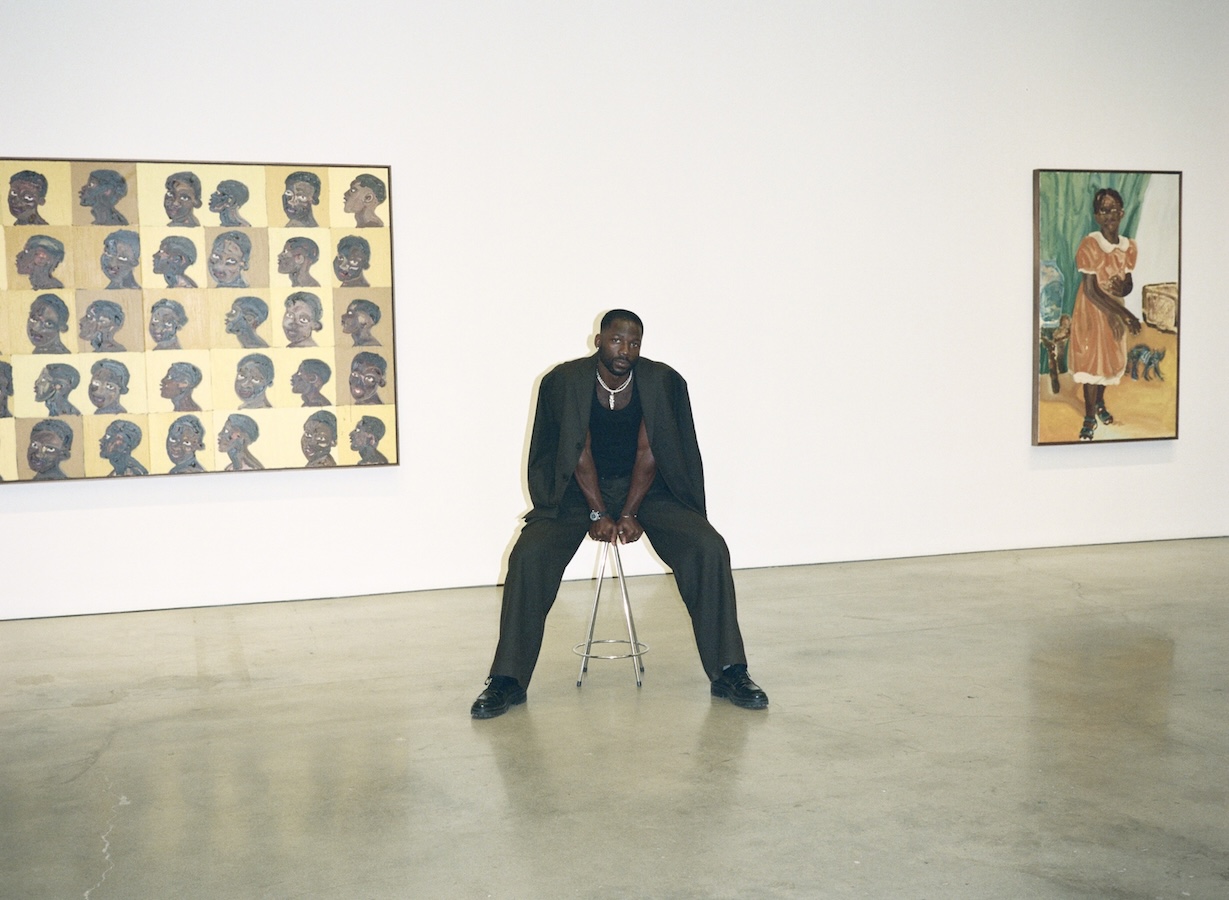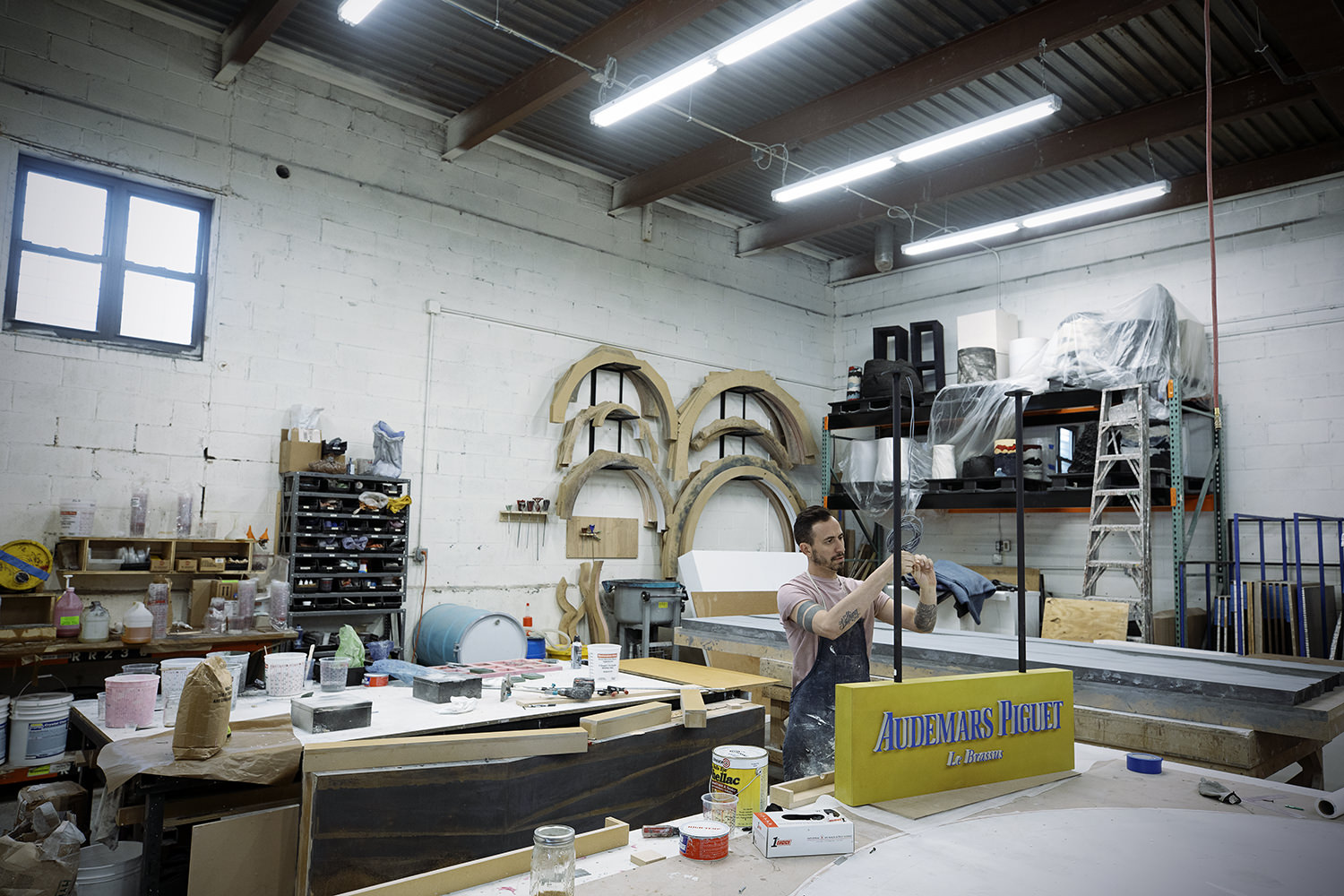
Fernando Mastrangelo in his studio working on the logo for the Audemars Piguet Collectors Lounge.
Photo by Steve Benisty
In Hong Kong last March, Audemars Piguet debuted its latest collaboration with Fernando Mastrangelo, entitled The Vallée. The installation was inspired by his visit to Le Brassus, where the artist was struck by the historic forests, impressive limestone caves, and the sun setting over the majestic vista of the valley.
With his photos, notes, and sketches of the region, Mastrangelo imagined a space that reflected time on a grand scale, while emphasizing a connection to material, a theme his own studio practice shares with AP. You could call the artist material obsessed. Early in his career, he used ash, salt, and sugar to create sculptures and wall reliefs. As his practice grew to incorporate functional objects, he began incorporating sand, and fell in love with its versatility.
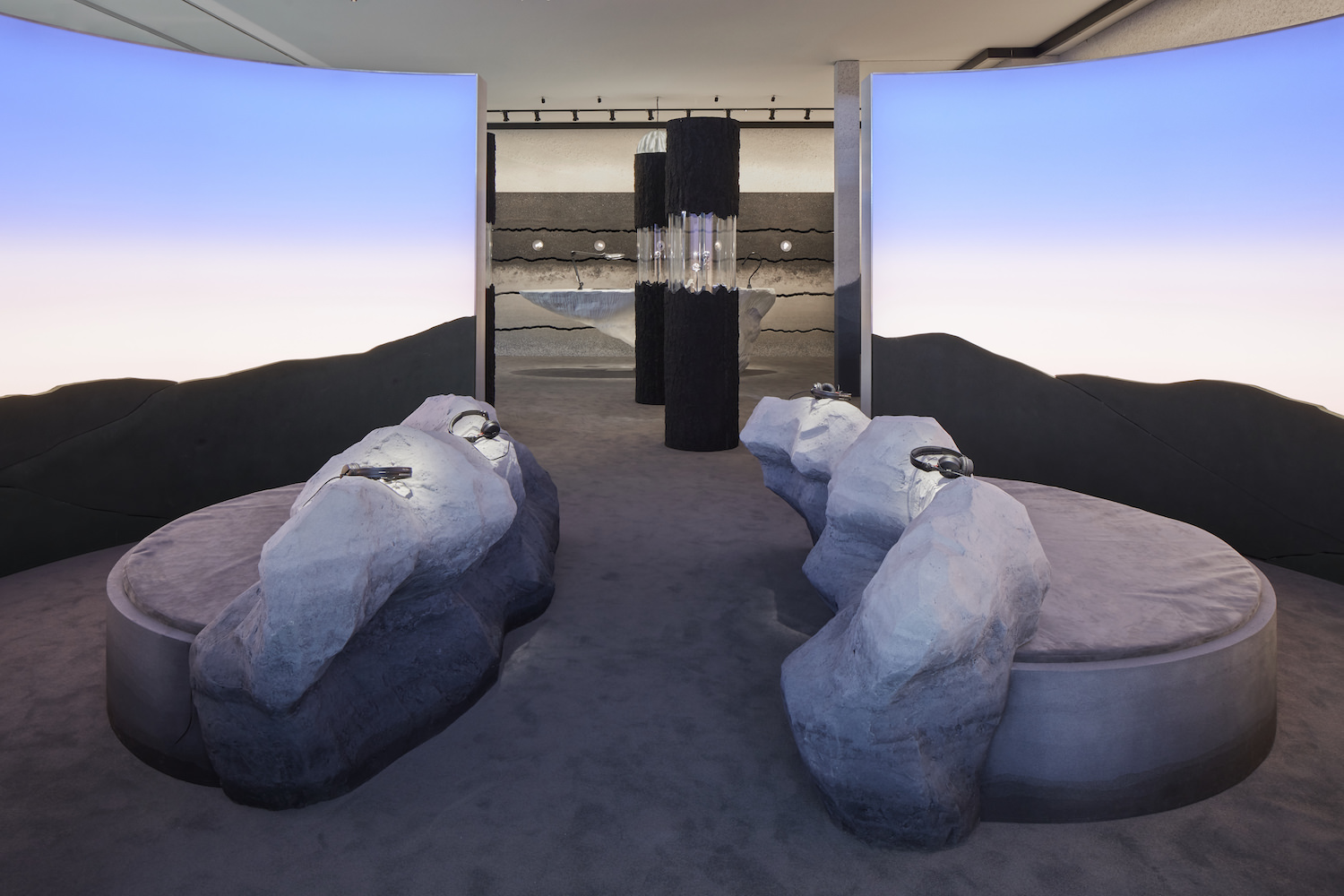
Mastrangelo’s design at Art Basel in Basel, June 2019. Courtesy of Audemars Piguet.
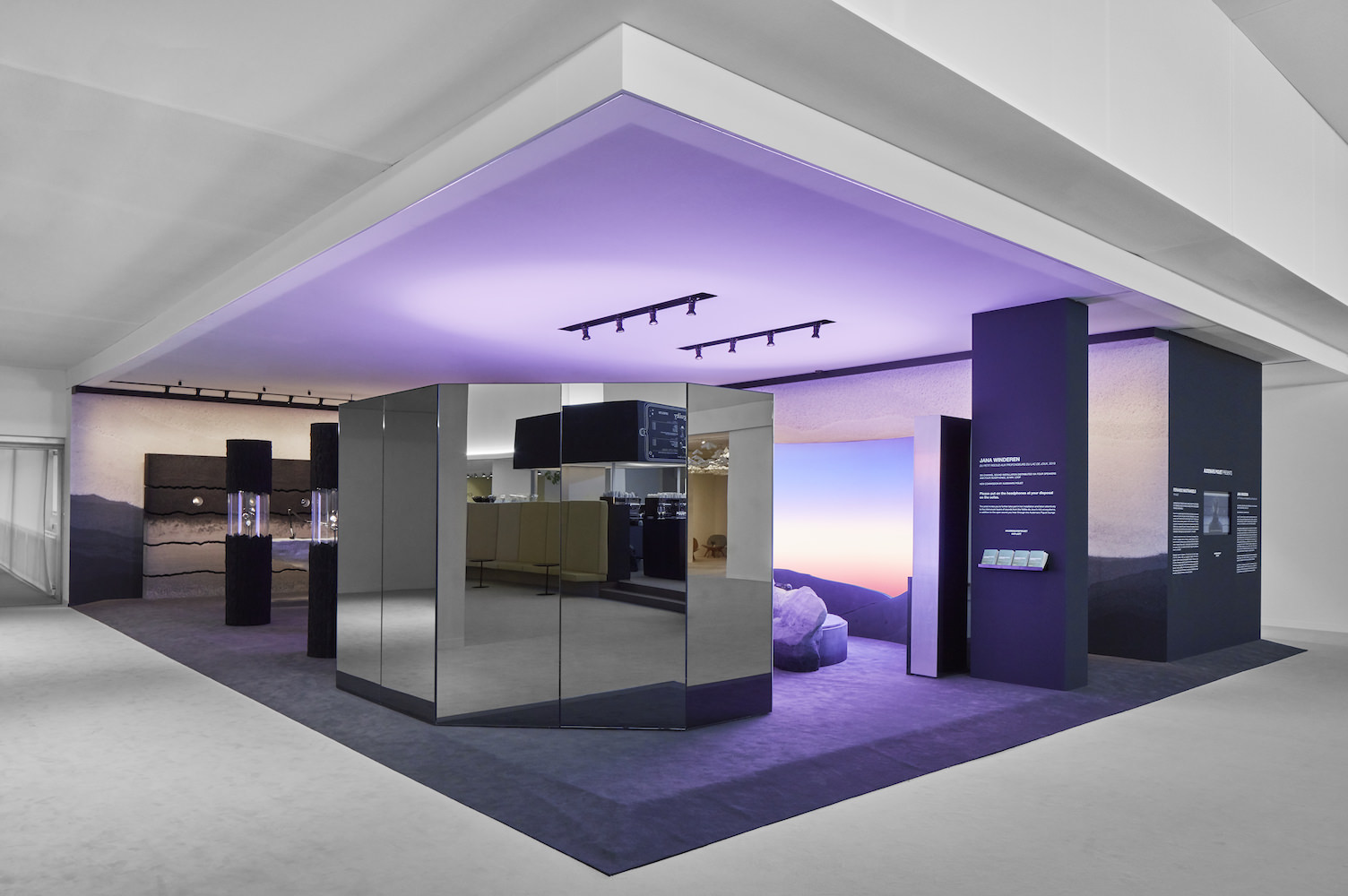
Mastrangelo’s design at Art Basel in Basel, June 2019. Courtesy of Audemars Piguet.
Earlier this month, Whitewall caught up with Mastrangelo at his massive, 10,000 square foot studio in the East New York neighborhood of Brooklyn. After moving through his gallery space, where visitors and collectors can experience completed pieces—like flatworks made from colored sand, glacier-like benches, volcanic-inspired mirrors, and a bookshelf reminiscent of a Southwestern landscape—we found Mastrangelo putting the finishing touches on his latest objects.
WHITEWALL: Material is such an important part of your practice. How did the Vallée de Joux inspire your choice of material for the lounge?
FERNANDO MASTRANGELO: I definitely wanted to use limestone from Switzerland. We had some of it crushed and so we could use the powder in a lot of the pieces. My signature material right now is sand. I feel like sand is a rich way for me to express myself, so there’s a lot of components that are cast out of sand.
WW: Tell us about your visit to the Vallée de Joux. What struck you about the landscape?
FM: When my team and I arrived, we visited the neighboring spruce forest, the trees of which are sought after by luthiers all over the world for their excellent resonance quality. And we went to these incredible, massive, beautiful limestone caves in Vallorbe as well as to the Combe Noire quarries to see where limestone gets extracted.
One of the last things I did there was go to this beautiful restaurant at the top of a mountain, the Dent de Vaulion. It’s just this gorgeous view where we watched the sunset.
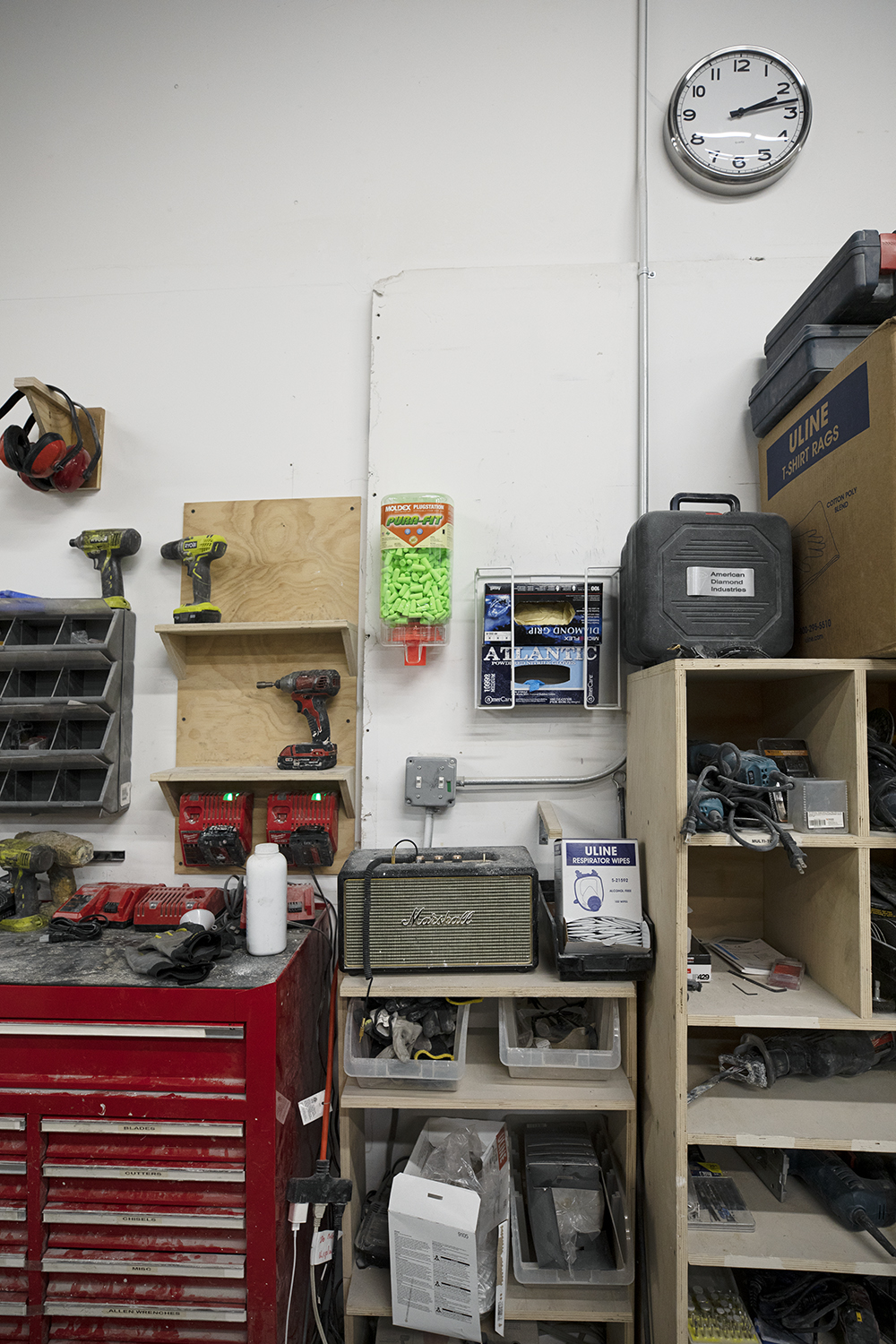
Fernando Mastrangelo’s studio, photo by Steve Benisty.
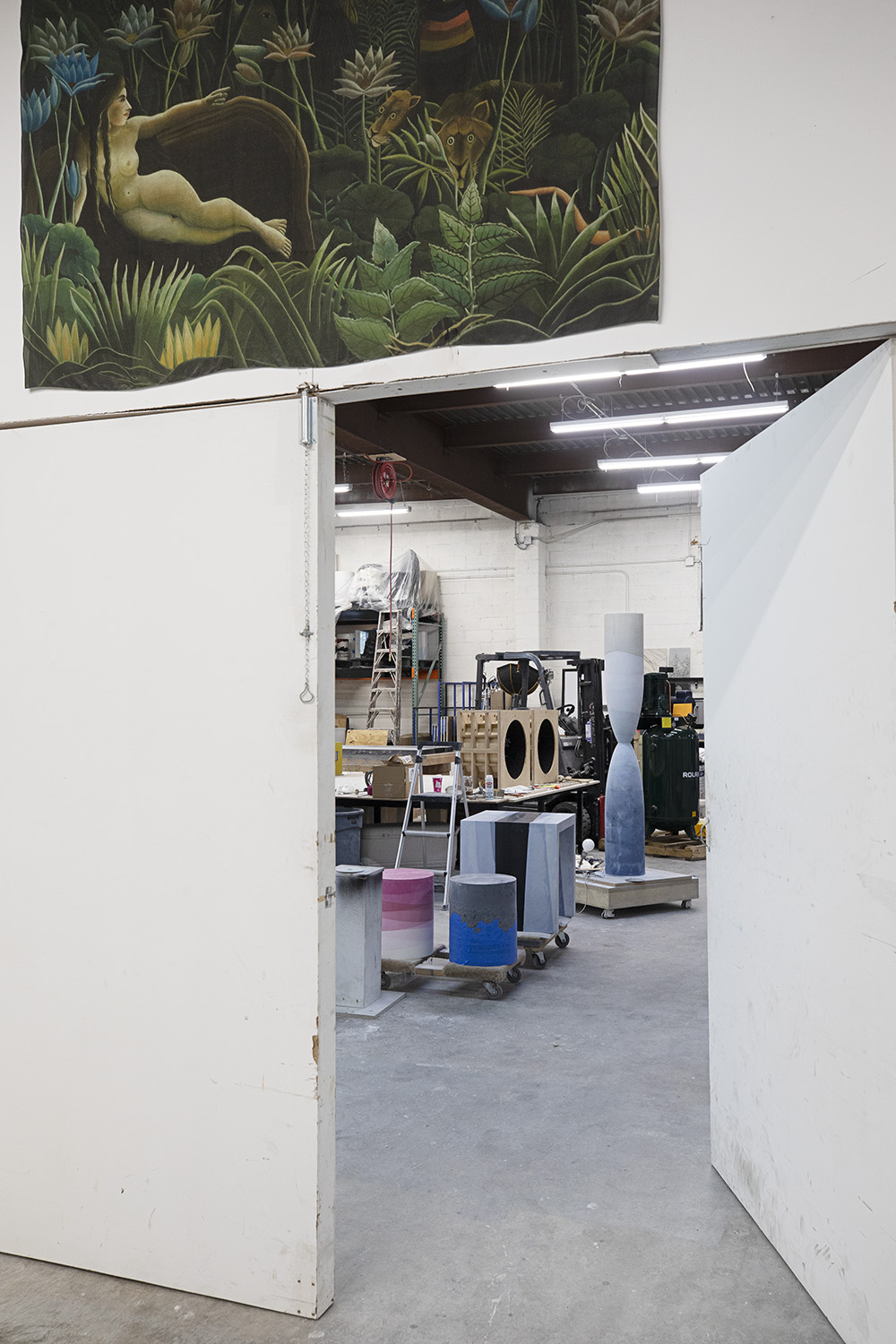
Fernando Mastrangelo’s studio, photo by Steve Benisty.
WW: How did you want to translate that impression into your installation for the lounge?
FM: My work has always been about nature, so I took all of those little experiences and my photos taken while I was there, and when I came back to New York, I devised a booth concept around it all.
As you go into the space you’re going to see watch displays in the form of the trees from the forest. There’s a wall called Strata, which is based on the quarry from the where the limestone is extracted. There is a watchmaker’s desk that emulates the cave with stalactites hang overhead as lights. And then there’s this big room that we built that emulates a sunset in Switzerland, the Escape Room. We created a wallpaper that wraps around to match the view of the valley.
I tried to capture my experience of the Vallée de Joux and to tell the story of Audemars Piguet— to reveal a story that visitors might not have known before.
WW: How did Le Brassus impact your concept around the theme of time?
FM: I wanted to deal with time, but I was thinking about it more in a geological sense. You’ll see notions of geological time as a metaphor in the piece. For example, the trees that become the displays, each one is a different size—the newer watches are housed in smaller trees, and the antique watches are in the bigger trees. Obviously, as the tree gets older and larger it expands. And in the Strata wall, which represents the limestone of the quarry, you see separate layers that show the many millions of years it takes to form.
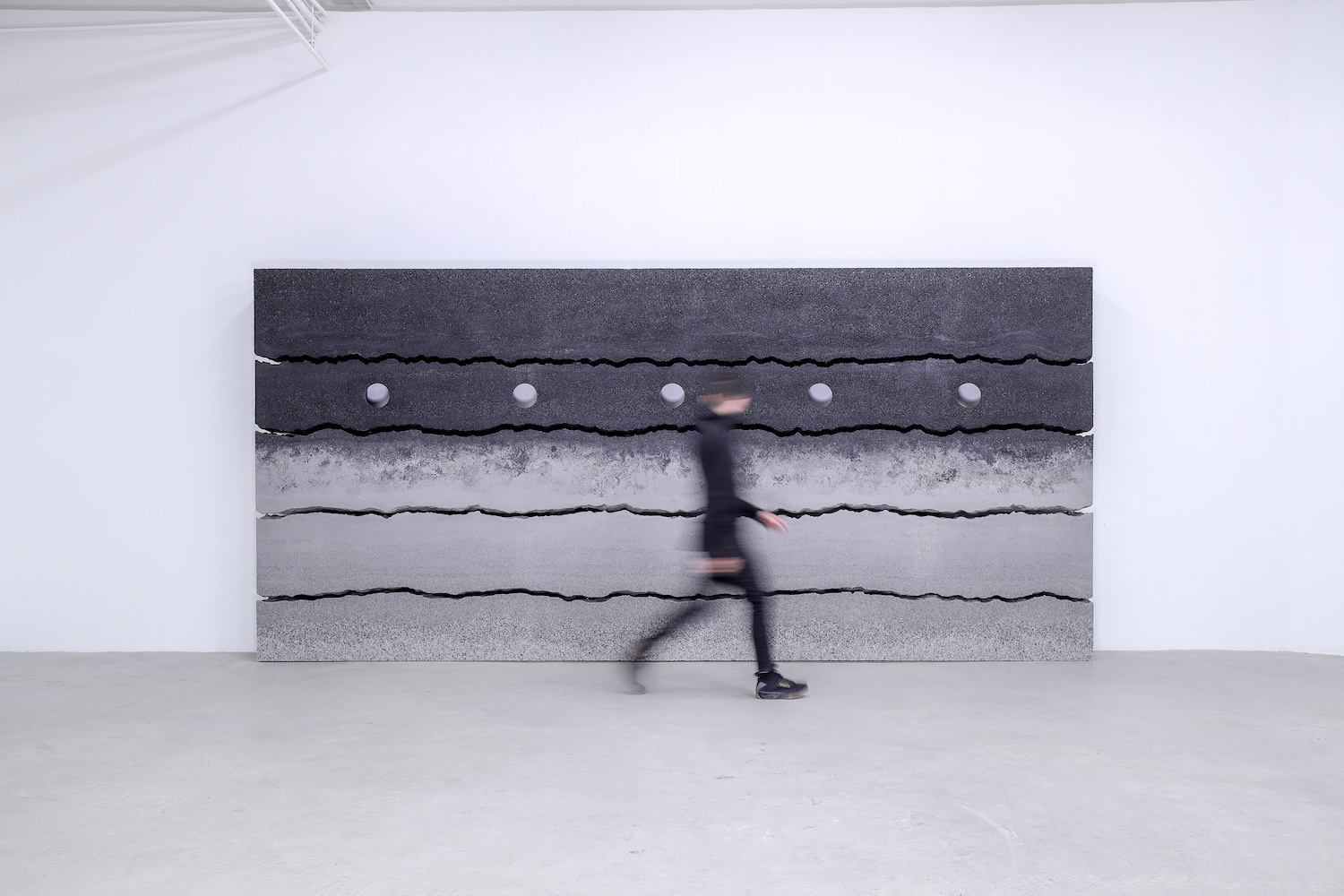
Courtesy of the artist and Audemars Piguet.
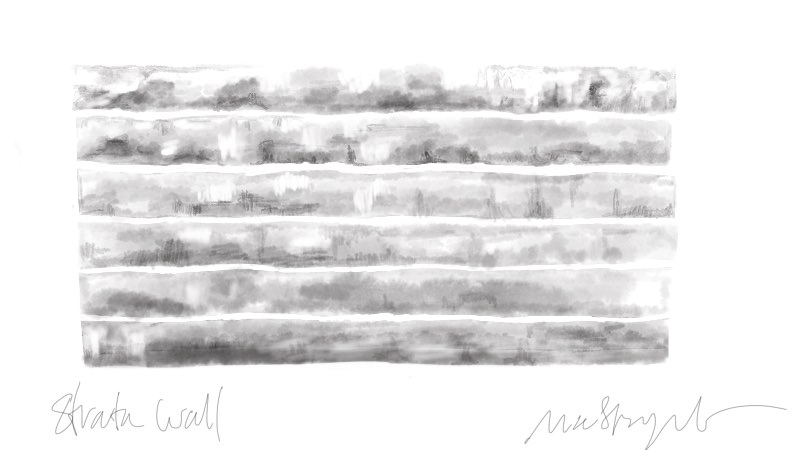
Courtesy of the artist and Audemars Piguet.
WW: Can you tell us about the process of creating the Strata wall?
FM: It’s a pretty complex piece to make. Each layer had to be cast separately to assure that they perfectly match up and split. We made almost twice as many molds to be able to accomplish that so the seams are perfectly adjoined. Each layer goes through a process of two molds, one to create the negative to then create a positive, to assure that each later connects perfectly to the next.
And then of course, you’re dealing with these massive layers so we use aluminum honeycomb to help us reduce the weight. They are cast hollow so that it is a manageable scale, in a combination of all the material from silica, to sand, to the limestone we brought from Switzerland, crushed marble, and coal. The idea for that piece was for it to look as if the layers of the earth have been pulled apart.
WW: What did you use to create the stalactite-like chandeliers?
FM: We sculpted it by hand out of foam and plaster to really emulate the stalactite. And then we made a mold and we cast it out in a crushed glass.
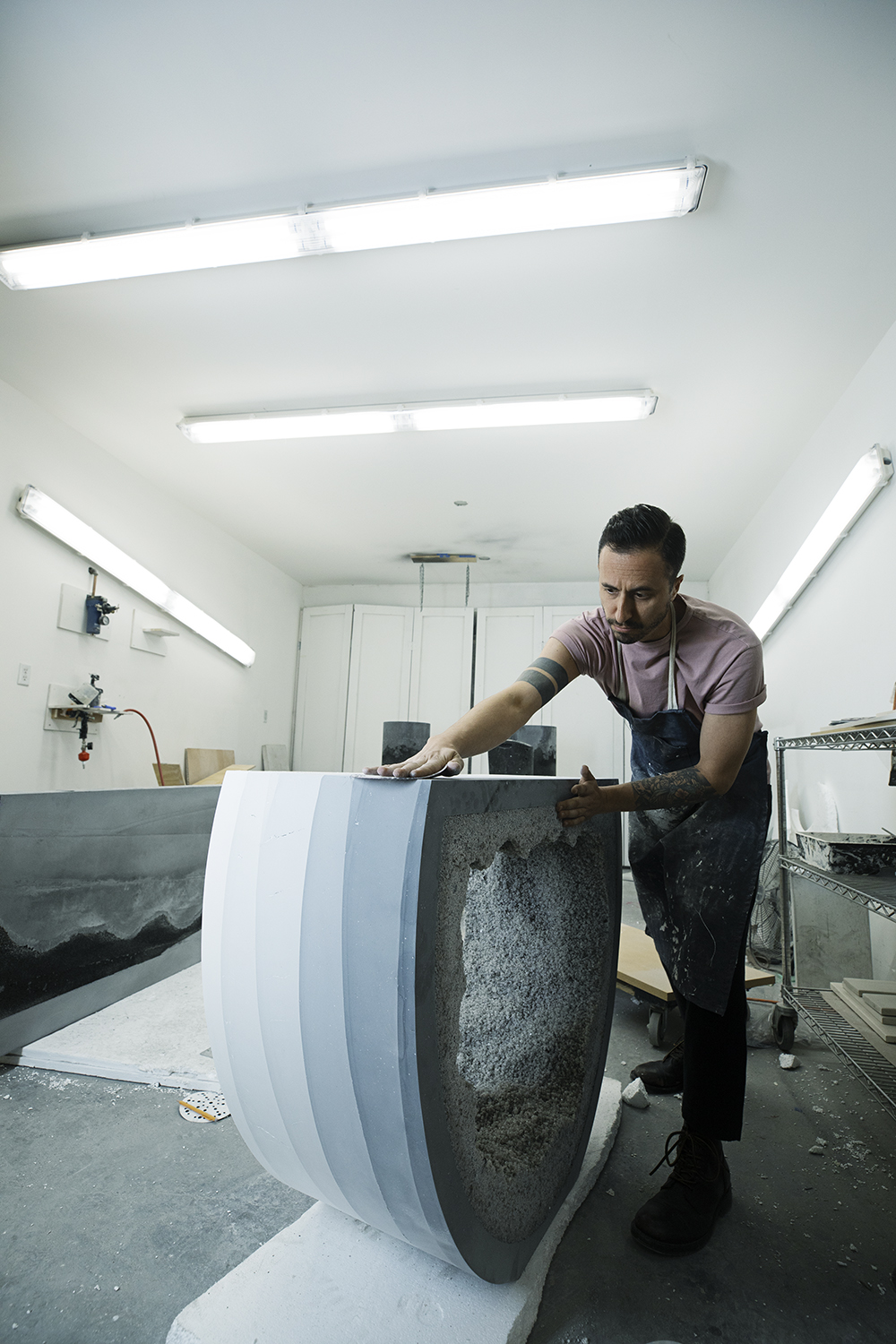
Fernando Mastrangelo in the studio, photo by Steve Benisty.
WW: What do you like about working with sand?
FM: It’s so versatile. I can make paintings with it. I can make mirrors. The colors that I can get are so, so beautiful.
WW: What is a typical day in the studio like for you?
FM: I wake up pretty early, around 6AM, and I’ll try to hammer out some emails. Then I’ll go to the studio and figure out where projects are. And then, like today, for example, I’m going to go to a meeting next, and it’s either that or doing a studio visit, or I’m on my computer designing things, sending in proposals, working with my team on renderings, coordinating logistics, and so on.
I also have a nonprofit, In Good Company. We host exhibitions of emerging designers. When I got my current studio space I just felt like I needed to start giving back. The way that I thought would be best was to help young artists try to get their career started. So that’s the mission of the nonprofit, to create a platform for emerging designers and artists. This year we gave out $5,000 to one of the emerging designers and we did over $15,000 of sales to for artists, on a 75/25 split—75 percent goes to the artists and 25 percent goes back to the nonprofit.
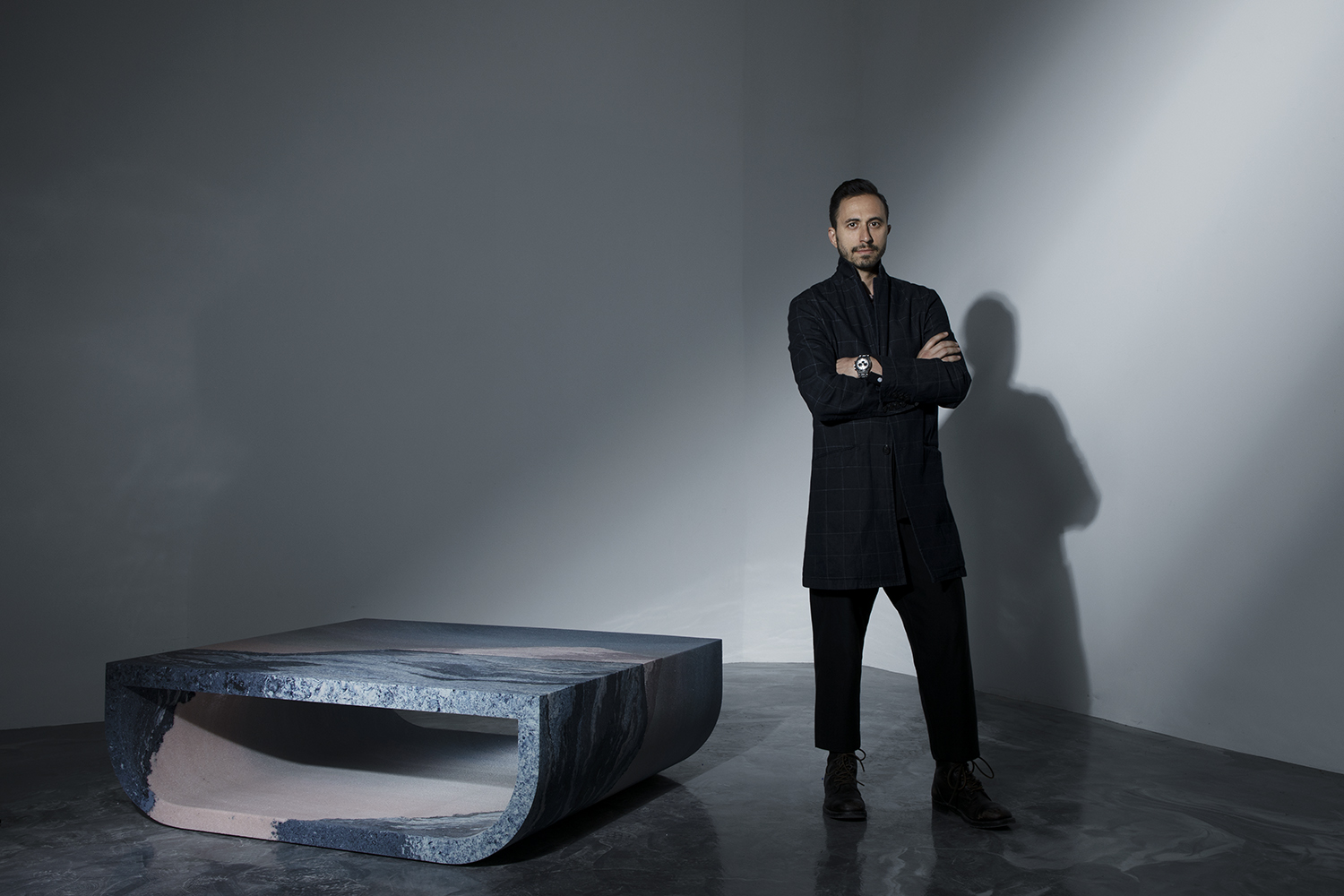
Portrait by Steve Benisty.

